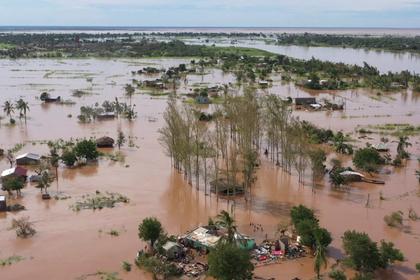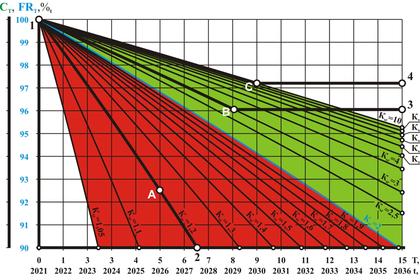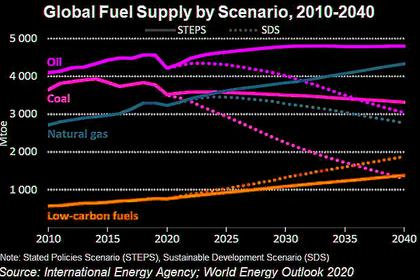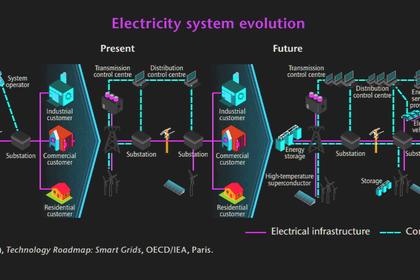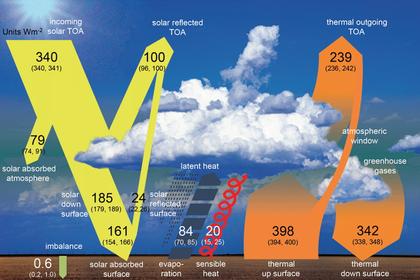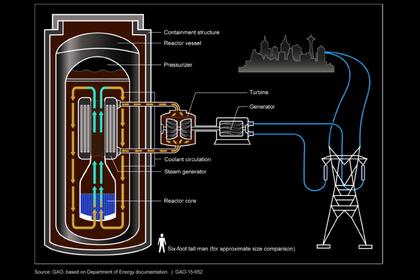
ENERGY TRANSITION TO CARBON NEUTRALITY AS A FACTOR OF UNPRECEDENTED ACCELERATION OF GLOBAL WARMING
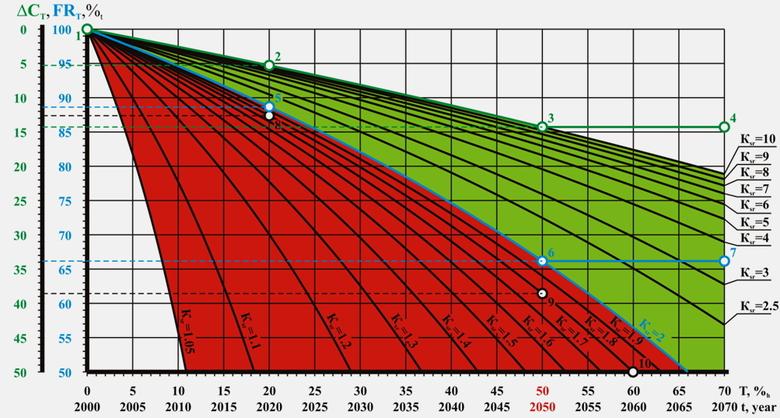
Introduction
The main conclusion that follows from the recently published IPCC report "Climate Change 2021": global warming is associated with human activities and is happening at an unprecedented rate. The report is silent that this acceleration coincided in time, scale and type of environmental impact with the global energy transition to carbon neutrality. It is implemented by replacing traditional energy sources (hereinafter referred to as TES) with renewable sources (hereinafter referred to as RES).
The organizers and beneficiaries of the transition to carbon neutrality are politicians, banks and business. They make it their main task to replace all TES with RES as soon as possible. With this replacement, the ecological "cleanliness" of all renewable energy sources is not questioned. Replacement of any TES in the shortest possible time with any RES is welcomed. The influence of this process is global because at present, about 30% of the world's electricity is produced through renewable energy sources due to their activities. And the speed of replacing CIE with RES is increasing.
The organizers and beneficiaries of the energy transition ignore the obvious fact that all renewable energy sources differ from each other, including in their ability to prevent global warming. This difference has been confirmed by several scientific studies on the life cycles of renewable energy sources. Also known is a simple and inexpensive to implement the method [6] for determining this ability. It is based on taking into account the energy efficiency of each RES. The energy self-reproduction coefficient Ksr is used in it as a criterion for energy efficiency.
This criterion makes it possible to determine the degree of ecological "cleanliness" of any RES, to provide the production and use of only environmentally "clean" ones, as well as to increase their ecological "cleanliness". For example, the renewable energy sources with Ksr <2 are environmentally “dirty”, although they give the impression of being environmentally “clean”.
The lack of control over the Ksr value has opened up a real opportunity to produce a large number of environmentally "dirty" renewable energy sources and pass them off as environmentally "clean" ones. The desire of the organizers and beneficiaries of the energy transition through it to achieve their goals, as well as its global scale, increases this opportunity. This was the main reason for the unprecedented acceleration of global warming in our opinion. The rationale for this cause and proposals for its elimination, as well as for eliminating the consequences of global warming are given below.
Consequences of the use of renewable energy sources with uncontrolled ecological "cleanliness" from 01.01.2001 to 31.12.2020
The nomogram in Fig. 1 is used to substantiate the degree of influence of the use of RES with different ecological "cleanliness" on the rate of global warming. For more details on the calculation of the nomogram and its application, see [6]. The nomogram is calculated on the assumption that in 2000, at the current rate of growth in energy consumption, mankind had reserves of fossil fuels for 100 years without replacing TES with RES. The depletion of these reserves is shown by the blue line located between the red and green areas of the nomogram.
Below in Figures a) a general image of the situation is presented, and in Figures b) - an enlarged image of the most interesting part.
Point 1, which corresponds to 01.01.2001, was the top of the nomogram in Fig. 1 and the point of choosing the degree of ecological "cleanliness" of the energy transition. At this point, the global reserves of fossil fuels were at their maximum, i.e. FRT1 = 100%, and the increase in the amount of greenhouse gases in the atmosphere was assumed to be zero, i.e., DCT1 = 0%.
The schedule of the most environmentally “clean” energy transition from 01/01/2001 to 12/31/2050 is shown in Fig. 1 with the green line 1-2-3-4. The organizers and beneficiaries of the energy transition could implement it by using RES with Ksr = 10. Such a transition would maximally reduce the rate of depletion of fossil fuels, the rate of increase in the amount of greenhouse gases in the atmosphere and, accordingly, would minimize the rate of global warming. The parameters at intermediate point 2 and at point 3 of the completion of this transition were be equal:
FRT2 = 94.72% - global reserves of fossil fuels at point 2 as of 12/31/2020;
DCT2 = 5.28% - the global increase in the amount of greenhouse gases at point 2 as of 12/31/2020;
FRT3 = 85.73% - global reserves of fossil fuels at point 3 as of 12/31/2050;
DCT3 = 14.27% - the global increase in the amount of greenhouse gases at point 3 as of 12/31/2050.
Thus, with the most environmentally “clean” energy transition, humanity would have spent on the date of 12/31/2020 approximately 5.28% of all reserves of fossil fuels and would add the same amount of greenhouse gases to the atmosphere. And on the date 12/31/2050 - 14.27%. After completing the transition at point 3, humanity would has been stop using fossil fuels in energy. This is shown on the nomogram with a horizontal line 3-4.
The graph of the most ineffective energy transition process is shown in Fig. 1 blue line 1-5-6-7. This can be done using the RES with Ksr = 2. It is the most ineffective because it does not reduce the rate of depletion of fossil fuel reserves, the rate of increase in the amount of greenhouse gases in the atmosphere and, accordingly, does not reduce the rate of global warming. They would remain equal to the velocities without an energetic transition. The parameters at intermediate point 2 and at point 3 of the completion of the most ineffective transition were be equal:
FRT5 = 88.65% - global reserves of fossil fuels at point 5 as of 12/31/2020;
DCT5 = 11.35% - the global increase in the amount of greenhouse gases at point 5 as of 12/31/2020;
FRT6 = 66.09% - global reserves of fossil fuels at point 6 as of 12/31/2050;
DCT6 = 33.91% - the global increase in the amount of greenhouse gases at point 6 as of 12/31/2050.
Thus, with the most inefficient transition, humanity would have spent approximately 11.35% of all fossil fuel reserves as of 12/31/2020 and added the same amount of greenhouse gases to the atmosphere. And on the date 12/31/2050 - 33.91%. This is twice as much as in the case of the most environmentally “clean” energy transition. After completing the most inefficient transition at point 6, humanity would stop using fossil fuels for energy. This is shown on the nomogram by the horizontal line 6-7. Therefore, the rate of warming in the most inefficient transition would be equal to the rate of warming in the absence of an energy transition.
IPCC's Climate Change 2021 report on an unprecedented rate of warming gives the possibilities to suggest that it was even higher than in the absence of an energy transition. This is possible if the organizers and beneficiaries of the energy transition in the process of replacing CIE used RES with Ksr <2, for example, with Ksr = 1.8. The process of such a replacement is shown on the nomogram by the line 1-8-9-10. The parameters of points 8, 9 and 10 of such a process are equal:
FRT8 = 87.38% - global reserves of fossil fuels as of 12/31/2020;
DCT8 = 12.62% - the global increase in the amount of greenhouse gases as of 12/31/2020.
FRT9 = 61.4% - global reserves of fossil fuels as of 12/31/2050;
DCT9 = 38.6% - the global increase in the amount of greenhouse gases as of 12/31/2050.
FRT10 = 0% - global reserves of fossil fuels as of 11.2091;
DCT10 = 100% - the global increase in the amount of greenhouse gases as of 11.2091.
Thus, using renewable energy sources with Ksr = 1.8, humanity would be spend on the date of December 31, 2020 approximately 12.62% of all fossil fuel reserves and add the same amount of greenhouse gases to the atmosphere. And on the date 12/31/2050 - 38.6%. This is 2.5 times higher than in the case of the most environmentally “clean” energy transition.
Further continuation of the replacement of all TES for RES with Ksr = 1.8 may be forced to end in October 2091 at point 10. At this time, all reserves of fossil fuels will be depleted, a maximum of greenhouse gases will be added to the atmosphere, and humanity will lose the ability to fully meet its energy needs. We believe that the above information convincingly shows that the reason for the unprecedented acceleration of global warming is the lack of control over the energy efficiency of renewable energy sources.
Opportunities of humanity from 01.01.2001
Above in Fig. 1, the untapped potential of mankind was shown from 01.01.2001 to 05.2204 due to the use of energy inefficient RES. It was also shown there that as of 01/01/2021, the possibilities of humanity to implement the transition to carbon neutrality have changed significantly compared to the possibilities as of 01/01/2001. These new capabilities are shown in Fig. 2. It shows in gray the irrecoverable waste of time, waste of fossil fuels and the increase in greenhouse gases that could have been avoided in the previous 20 years. In addition, the dimensions of the nomogram have decreased in comparison with the nomogram shown in Fig. 1. Accordingly, the possibilities of humanity have also become less in comparison with the possibilities as of 01.01.2001. But they are not completely lost yet.
The consequences of using these opportunities depend on the decisions that will be adopted and implemented by the organizers and beneficiaries of the energy transition. Possible options are shown below.
Point 8, which corresponds to 01/01/2021, is the top of the nomogram in Fig. 2 and was the point of choosing the degree of ecological "cleanliness" of the continuation of the energy transition. At that point, global reserves of fossil fuels were FRT8 = 87.38%, and the increase in the amount of greenhouse gases in the atmosphere was DCT8 = 12.62% compared to 01.01.2001 (see point 1).
The schedule of the most environmentally “clean” energy transition from 01/01/2021 to 12/31/2050 is shown in Fig. 2 with the green line 8-11-12. It could be implemented using renewable energy sources with Ksr = 10. The parameters at point 11 of the end of the transition would be:
FRT11 = 77.09% - global reserves of fossil fuels at point 11 as of 12/31/2050;
DCT11 = 22.91% - the global increase in the amount of greenhouse gases at point 11 as of 12/31/2050.
Thus, with the most environmentally "clean" energy transition, humanity would have spent on the date of 12/31/2050 already approximately 22.91% of all reserves of fossil fuels and would add the same amount of greenhouse gases to the atmosphere. This is significantly more than 14.27% (see point 3). Obviously, the rate of global warming will also increase.
The graph of the most ineffective energy transition process is shown in Fig. 2 blue line 8-13-14. The parameters at point 13 of its completion would be:
FRT13 = 64.32% - global reserves of fossil fuels at point 13 as of 12/31/2050;
DCT13 = 35.68% - the global increase in the amount of greenhouse gases at point 13 as of 12/31/2050.
However, the organizers and beneficiaries of the energy transition continue to ignore the energy efficiency of RES. Therefore, the use of energy inefficient renewable energy sources can continue indefinitely. In Fig. 3 shows the forecast of changes in the possibilities of mankind with the continuation of the use of renewable energy sources with Ksr = 1.8 until 12/31/2025. It shows in yellow the irrecoverable waste of time, waste of fossil fuels and the increase in greenhouse gases. They may be partially avoided or significantly reduced in the next 5 years if we introduce global control over the efficiency of renewable energy sources.
Point 15, which corresponds to 01/01/2026, is the top of the nomogram in Fig. 3 and will be the point of choosing the degree of ecological "cleanliness" of the continuation of the energy transition.Global reserves of fossil fuels at point 15 will decrease to FRT15 = 83.74%, and the increase in the amount of greenhouse gases in the atmosphere will increase to DCT15 = 16.26%.
The graph of the best energy transition process from 01/01/2026 to 12/31/2050 is shown in Fig. 3 with the green line 15-16-17.The parameters at the end point 16 of this transition stage will be:
FRT16 = 74.57% - global reserves of fossil fuels at point 16 as of 12/31/2050;
DCT16 = 25.43% - the global increase in the amount of greenhouse gases at point 16 as of 12/31/2050.
However, the organizers and beneficiaries have not even discussed this version of the energy transition yet.Therefore, it is most likely that they will continue to use energy inefficient renewable energy sources according to the schedule 1-8-15-9-10.This will further increase the rate of global warming, which we will learn about in the next IPCC report.
It should be noted that the above calculation results are based on the assumption that RES with Ksr = 1.8 are used when replacing TES.In reality, the efficiency of RES is not controlled.It may turn out to be much lower because environmentally “dirty” RES can be more economically profitable for the organizers and beneficiaries of the transition.
Conclusions and offers
If the organizers and beneficiaries of the transition to carbon neutrality continue to use renewable energy sources without monitoring their energy efficiency, then the rate of global warming will increase.It is necessary to introduce a system of global control of the energy efficiency of renewable energy sources as soon as possible to minimize the rate of global warming.
In our opinion, it is time to abandon the practice of "development" of the economy at the expense of environmental degradation. The time has come for the development of the economy due to the restoration of the environment. Our proposals in this direction are presented in [8]. But the costs of its restoration will be the greater, the greater the harmful consequences from energy inefficient renewable energy sources.
Sources of information
1. V.Matveev, Vl.Matveev Choosing the best systems based on Renewable Energy in Energy Transition process, 2020
2. V.Matveev, Vl.Matveev Energy Efficiency Criteria of a Renewable Energy System, 2020
3. V.Matveev, Vl.Matveev Calculation of the Energy Transition parameters when choosing Renewable Energy System according to economic criteria, 2020
4. V.Matveev, Vl.Matveev Energy Efficiency the RESs as a UNFCCC Process Tool, 2020
5. V.Matveev, Vl.Matveev Energy Transition Efficiency, 2020
6. V.Matveev, Vl.Matveev Method for choosing renewable energy source when transition to carbon neutral to provide sustainable development, 2021
7. V.Matveev, Vl.Matveev Solving the problems of consumer protection and competition in the renewable energy market, 2021
8. V.V.Matveev, Vl.V.Matveev, A.V.Serbulov Ecological and economic aspects of creating a global environmental management system, E3S Web Conf. Volume 291, 2021, IV International Scientific and Practical Conference “Sustainable Development and Green Growth on the Innovation Management Platform” (SDGG 2021)
Authors
Vladimir V. Matveev
Project director,
Mob. tel.: +79114524562 (Viber, WatsApp), e-mail: wwmatveev@gmail.com,
site: www.noologistics.ru
Valery V. Matveev
Deputy Project Director for R&D,
Mob. tel.: +48519792559 (WatsApp), e-mail: energy_logistics@mail.ru,
site: www.noologistics.ru
-----
Earlier:
